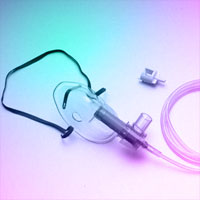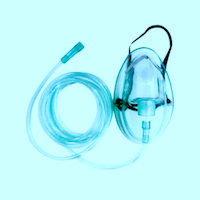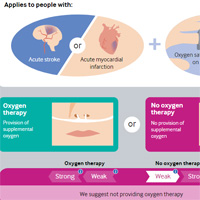Tag: oxygen

DeepSOFA: A Continuous Acuity Score for Critically Ill Patients using Clinically Interpretable Deep Learning
Traditional methods for assessing illness severity and predicting in-hospital mortality among critically ill patients require time-consuming, error-prone calculations using static variable thresholds. These methods do not... read more

Effect of high-flow nasal cannula oxygen therapy in adults with acute hypoxemic respiratory failure
Conflicting recommendations exist on whether high-flow nasal cannula (HFNC) oxygen therapy should be administered to adult patients in critical care with acute hypoxemic respiratory failure. We performed a meta-analysis of... read more

Teen Who Walked While On Life Support is Home from Hospital
For the past 467 days, Zei Uwadia has been hospitalized on life support -- but that hasn't kept the quiet-natured teenager from walking, eating her favorite foods or even doing planks as exercise. Now, with determination... read more

Shock: Roadside to Resus
If you're involved in the care of critically unwell patients then you will frequently encounter patients who are shocked. The European Society of Intensive Care Medicine defines shock as; "Life-threatening, generalized... read more

A Mixed Methods Exploration of ICU Nurses’ Perception of Handling Oxygen Therapy to Critically Ill Patients
Nurses handle supplementary oxygen to intensive care unit (ICU) patients as part of their daily practice. To secure patients of optimal and safe care, knowledge of nurses' perception of this practice, including influencing... read more

Bedside Ultrasound Assessment of Lung Reaeration in Patients With Blunt Thoracic Injury Receiving High-Flow Nasal Cannula Oxygen Therapy
High-flow nasal cannula oxygen therapy may be considered as an initial respiratory therapy for trauma patients with blunt chest injury. High-flow nasal cannula therapy could improve lung aeration as noted by the transthoracic... read more

Cast of the Right Bronchial Tree
A 36-year-old man was admitted to the intensive care unit with an acute exacerbation of chronic heart failure. His medical history included heart failure with an ejection fraction of 20%, bioprosthetic aortic-valve replacement... read more

Mortality and Morbidity in Acutely Ill Adults Treated with Liberal vs. Conservative Oxygen Therapy
In acutely ill adults, high-quality evidence shows that liberal oxygen therapy increases mortality without improving other patient-important outcomes. Supplemental oxygen might become unfavourable above an SpO2 range of 94-96%.... read more

Assessment of the adequacy of oxygen delivery
In this article, we review physiologic principles of global oxygen delivery, and discuss the bedside approach to assessing the adequacy of oxygen delivery in critically ill patients. Although there have been technological... read more

Oxygen Therapy for Acutely Ill Medical Patients
It is a longstanding cultural norm to provide supplemental oxygen to sick patients regardless of their blood oxygen saturation. A recent systematic review and meta-analysis has shown that too much supplemental oxygen increases... read more

Lessons From Everest’s Sherpas Could Aid Intensive Care Treatment
A research expedition to Mount Everest has shed light on the unique physiological basis of adaptations seen in the native Sherpa people, which make them better suited to life at high altitude. This improved understanding,... read more

Central venous oxygen desaturation during early sepsis linked to higher mortality
n the ALBIOS trial, persistence of low (... read more

High-Flow Nasal Cannula in Critically Ill Subjects With or at Risk for Respiratory Failure
High-flow nasal cannula (HFNC) oxygen delivery has been gaining attention as an alternative means of respiratory support for critically ill patients, with recent studies suggesting equivalent outcomes when compared with other... read more

Oxygen Flow Rate and FiO2: Understand the Relationship!
Oxygen, we all need it! We do not need a lot of it under normal circumstances, with 0.21 being the fraction of inspired oxygen (FiO2) of room air. FiO2 is defined as the concentration of oxygen that a person inhales. The... read more




